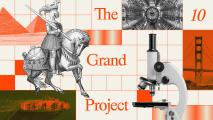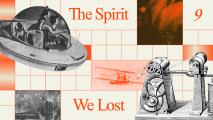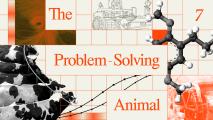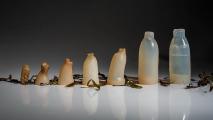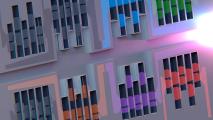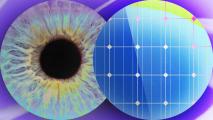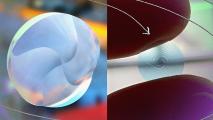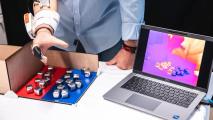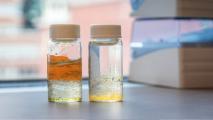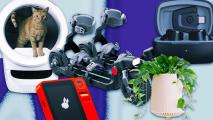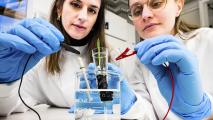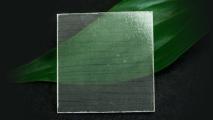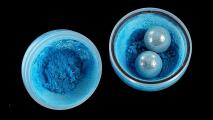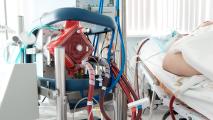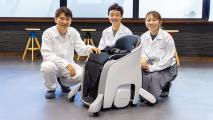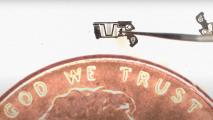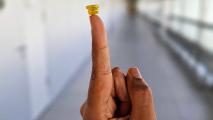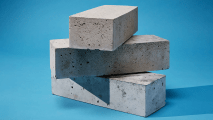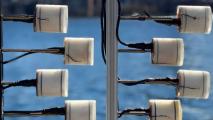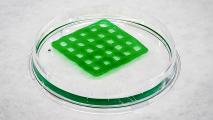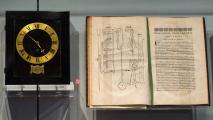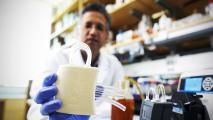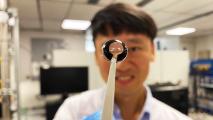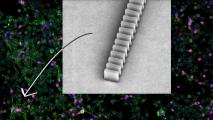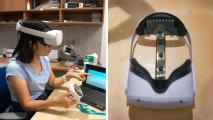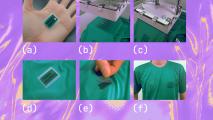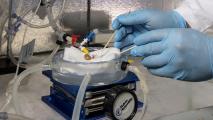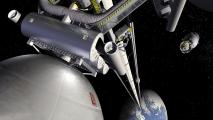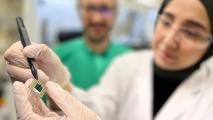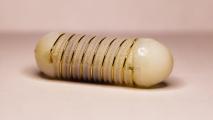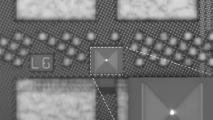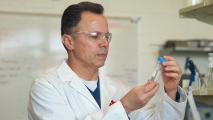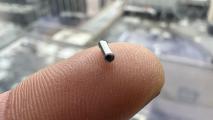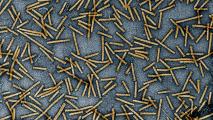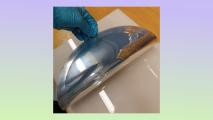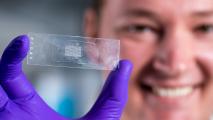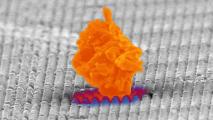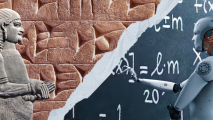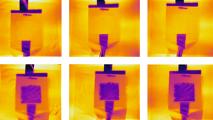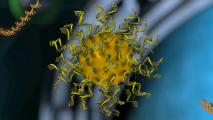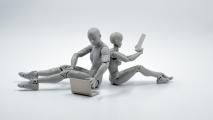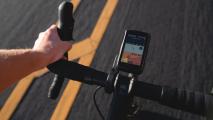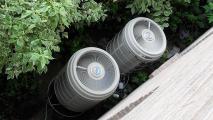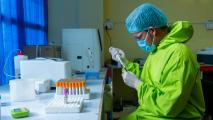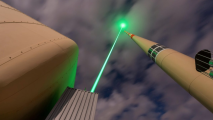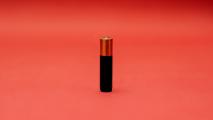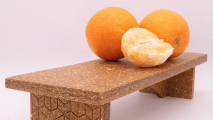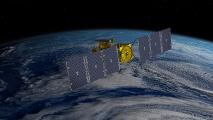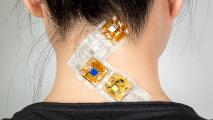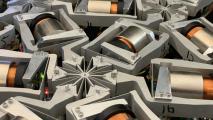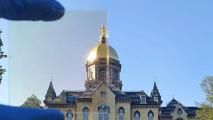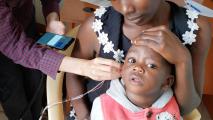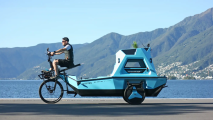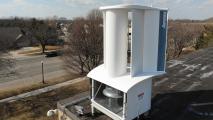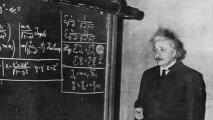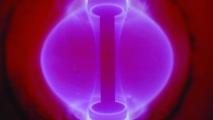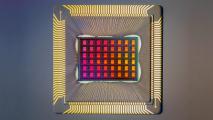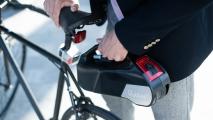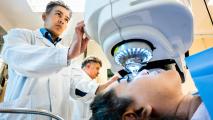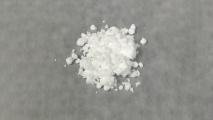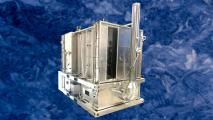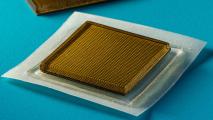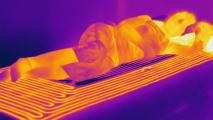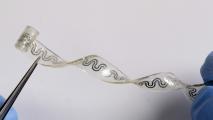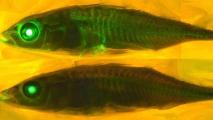Field: Inventions
A playbook for the next century of progress
To build a bold, abundant future, we must reform the laws, institutions, and culture that once powered human progress.
Progress is a grand project for humanity
Progress offers meaning, demands virtue, and calls builders to turn bold ideas into wonders that uplift human life.
We used to celebrate science and innovation
From the Brooklyn Bridge to the polio vaccine, society once honored signs of progress with parades, fireworks, and festivals.
Problem-solving is fundamental to human nature
Believing in the next solution is not blind optimism or even wishful thinking — it is a recognition that humans are problem-solving animals.
Shining a light on oil fields to make them more sustainable
Sensors and analytics give oil well operators real-time alerts when things go wrong, so they can respond before they become disasters.
Toward truly compostable plastic
Materials scientists are cooking up environmentally friendly plastics from natural sources like silk, plant fibers and whole algae.
3D processors could lead to a new era in wireless communication
New 3D processors could unlock more frequencies for wireless communication, unblocking congestion and unleashing new technologies.
Implantable solar cells could one day help restore vision
Australian researchers are developing tiny implantable solar cells that could be inserted into the eye to help restore vision.
New “spiral” contact lenses let you see up close and far away
New spiral-shaped multifocal lenses bend light in a way that corrects problems seeing up close and far away, even in poor lighting.
Man feels hot and cold again with prosthetic hand breakthrough
Researchers have built a device that helps users feel temperature through a prosthetic arm. A new study shows it works with high accuracy.
A new way to swiftly eliminate micropollutants from water
Scientists at MIT are using zwitterionic hydrogels to sustainably capture both organic and inorganic micropollutants from water.
How to find success with the 4 conditions of “intelligent failure”
Intelligent failure occurs in a low-risk environment and leads to growth or new knowledge. To fail intelligently, follow five strategies.
10 must-see technologies from CES 2024
From super-hyped AI assistants to apps that translate babies’ cries, CES 2024 has given us a glimpse at the tech of tomorrow, today.
New graphene semiconductor could revolutionize electronics
The first working graphene semiconductor outperformed silicon, suggesting that the supermaterial could be the future of electronics.
A real apartment complex was built like a LEGO set
Renco, a system combining LEGO-like blocks and color-coded building plans, could be the future of construction.
Zapping plants in “eSoil” makes them grow 50% larger
Using a new “eSoil” to electrically stimulate plants during hydroponic farming could potentially increase crop yields.
Why scientists are making transparent wood
Stronger than plastic and tougher than glass, the transparent wood is being exploited for smartphone screens, insulated windows, and more
Grinding scientists: Mechanochemistry could revolutionize the creation of new materials
Like a kitchen mortar and pestle, mechanochemistry harnesses ball milling to create chemical compounds, simpler, and faster than traditional methods.
A new machine is able to keep the brain alive without a heart
A new device that lets scientists precisely control the brain's blood supply could lead to new neuroscience breakthroughs.
MIT physicists turn pencil lead into “gold”
MIT physicists have metaphorically turned graphite, or pencil lead, into gold by isolating five ultrathin flakes.
How these wooden blocks could stop climate change
Bill Gates-backed startup Graphyte has unveiled Carbon Casting, carbon removal tech it says is cheap, scalable, and durable.
Analog computing is undergoing a resurgence
Combining smart sensors with an older technology — analog computing — could dramatically reduce their power consumption.
Honda unveils hands-free wheelchair you steer like a Segway
Honda Robotics has unveiled a prototype of the UNI-ONE, a hands-free wheelchair that you steer with your body weight.
Ex-NASA engineer Mark Rober created the world’s smallest Nerf gun — from DNA
Mark Rober and Pallav Kosuri created a Nerf gun so tiny they had to build it out of DNA. This DNA "origami" has the potential to revolutionize engineering.
This massive autonomous cargo plane could slash shipping costs
A UK startup has an ambitious plan to slash the cost of air freight by shipping goods in a massive autonomous cargo plane.
Octopus tentacle-like patch delivers drugs through your cheek
A needle-free drug delivery system inspired by octopus tentacles could one day replace injections for administering biopharmaceuticals.
Artificial wombs for preemies move closer to human trials
A panel of FDA advisors has met to discuss the development of artificial wombs designed to help extremely premature babies survive.
New low-carbon cement is stronger than the regular stuff
A low-carbon cement developed by two MIT grads has officially exceeded industry standards for strength, durability, and more.
Device offers long-distance, low-power underwater communication
Researchers create a device with piezoelectric transducers that enables battery-free underwater communication.
New MIT tech could help the world’s biggest polluters clean up their emissions
MIT is developing a process that could help speed up the adoption of carbon capture technology by making it less energy-intensive.
This startup’s tech turns CO2 into seashell dust
UCLA spinout Equatic has developed a carbon removal technology that pulls CO2 from ocean water, generating hydrogen in the process.
This “living material” self-destructs and cleans up polluted water
A 3D-printed “living material” packed with genetically engineered bacteria could be an eco-friendly way to clean up polluted water.
The physics of why the first clock in America failed
When the first Dutch-built pendulum clock was brought to the Americas, it failed to keep accurate time on the continents of the new world.
Artificial kidney aces test in pigs
An artificial kidney prototype just aced a pig trial, bringing it closer to human trials — and a step closer to ending the need for dialysis.
NASA is spending $850,000 to make a bag for space trash
TransAstra has secured a $850,000 NASA contract to build an inflatable bag for capturing space trash, which could then be recycled in orbit.
New battery charged by tears will power smart contact lenses
An ultra-thin, flexible battery could lead to safe, comfortable smart contact lenses partially powered by our tears.
“Light sculpting” chip can rapidly test for thousands of diseases
Stanford researchers have developed a new type of molecular test that works without a cumbersome amplification step.
Scientists tweak Meta VR headset to measure brain activity
A modified VR headset that records brain activity reveals how being immersed in VR impacts people on a neurological level.
New workout sensor tells you when you’re at risk of heat stroke
A wearable that alerts users when they're at risk of heat stroke could be a game changer for health monitoring, if it can become commercial.
How an H.G. Wells sci-fi novel predicted Oppenheimer and atomic bombs
The “atomic bombs” in H.G. Wells’ 1914 novel The World Set Free influenced a pioneer of real-world nuclear weapons: physicist Leó Szilárd.
Military vet’s lightweight mask is protecting soldiers from toxic fumes
A Canadian military veteran's innovative mask is protecting soldiers, police, and first responders from toxic exposure.
Cryogenically frozen organs successfully transplanted into rats for the first time
Thanks to a new "nanowarming" technique, scientists have successfully transplanted cryogenically frozen organs into rats for the first time.
Space elevators are inching closer to reality
Tremendous progress has been made developing the materials necessary for a space elevator — but our need for one could soon disappear.
New navigation system works even when GPS fails
A new navigation system that tracks subatomic particles called “muons” could help us get around indoors, underground, and underwater.
New “tandem” solar cell breaks world record
A new tandem solar cell containing layers of silicon and perovskite has demonstrated an unprecedented efficiency of 33.7%.
Ancient technology that was centuries ahead of its time
These forward-thinking inventions are often called "ahead of their time." They are reflections of the ingenuity of their civilizations.
New electronic pill zaps the stomach to regulate hunger
MIT’s new electronic pill stimulates stomach cells to regulate hunger — showing it's possible to hack the powerful gut-brain axis.
MIT breakthrough creates world’s smallest holographic microscope
The world’s smallest holographic microscope foreshadows a future in which smartphones could be used for high-res microscopy.
New tech permanently destroys “forever chemicals” in water
Canadian researchers' new treatment removes 99% of the harmful “forever chemicals” in water cheaply, safely, and permanently.
Hollow “seed” shrinks cancerous tumors from the inside
A new drug delivery system for pancreatic tumors could dramatically decrease medication dosages, helping minimize unpleasant side effects.
“Nanosyringes” can inject medicine into a single cell
MIT researchers have turned a system found in bacteria into programmable “nanosyringes” for injecting proteins into human cells.
New method could triple the size of space telescope mirrors
A new technique for making super-thin, lightweight space telescope mirrors could dramatically improve our view of space.
New drug delivery tech could ensure you never forget your meds
Rice University's new drug delivery tech uses biodegradable microparticles to administer medications exactly when and where they are needed.
Technology over the long run: See how dramatically the world can change within a lifetime
Bringing to mind how dramatically the world has changed can help us see how different the world could be in a few years or decades.
Science fiction books that predicted the future with terrifying accuracy
Science fiction writers have anticipated a variety of modern inventions, from cars to organ transplants. Some books barely seem like fiction.
New material traps CO2 — and turns it into baking soda
A new material for direct air capture systems turns trapped carbon into baking soda when introduced to seawater.
New anti-dust tech could solve this major problem for NASA
A new anti-dust technology could extend the lives of space rovers, improve the efficiency of solar panels, and more.
Cyborg fish grow electrodes in their brains and fins
A gel that turns into an electrode once inside the body might end the need for invasive implantation surgeries.
Computer scientist explains why even in the age of AI, computing isn’t limitless
A computer’s power is still limited by the number of operations it can execute per second and the efficiency of the algorithms it runs.
This “chameleon” material can heat or cool houses on demand
Thanks to “electrochromism,” a newly developed material can switch between absorbing and reflecting heat from the sun.
Scientists have discovered how to make almost any vaccine more potent
An approach called “rational vaccinology” could allow us to design more powerful vaccines, just by rearranging their ingredients.
5 AI experts predict how ChatGPT and DALL-E will affect the future of work
Will society will use this moment of AI breakthroughs to advance equity or exacerbate disparities? Five experts weigh in.
The biggest AI breakthroughs of the last year
Last year saw breakthroughs from AI tools such as ChatGPT, DeepMind, and DALL-E, which generate text and code.
5 things you didn’t know GPS could do
You’d be surprised at all the things that GPS — the global positioning system that underlies all of modern navigation — can do.
The most undervalued problem-solving tool? Lateral thinking.
Lateral thinking is a way of approaching problems. It deliberately forgoes obvious approaches in favor of oblique or unexpected ones.
Ancient mystery solved: Why was Roman concrete so durable?
How have Roman walls held up so long? Their ancient manufacturing strategy may hold the key to designing concrete that lasts for millennia.
How heat pumps of the 1800s are becoming the technology of the future
With ever-improving efficiencies, and rising sales in multiple countries, heat pumps are only getting harder for their detractors to dismiss.
This $3,000 completely wireless TV vacuum seals to your wall
Home entertainment startup Displace has unveiled a completely wireless TV that vacuum seals to walls and is controlled by hand gestures.
5 biotech trends to watch in 2023
After a monumental year of breakthroughs, scientists, investors, and CEOs share which areas of biotech they are eagerly watching this year.
Scientists use laser beam to divert lightning strikes
Since the time of Benjamin Franklin, we’ve looked for ways to control, or at least deflect, lightning strikes. Enter laser-guided lightning.
This MIT research could help us unlock smaller, lighter, and safer batteries
Replacing the liquid electrolyte in rechargeable lithium batteries with a thinner, lighter ceramic material could revolutionize technology.
This company turns food waste and mushrooms into building materials
UK-based company Biohm uses natural vegetative material like food waste and mushrooms to ‘grow’ insulation panels.
World’s highest-res pictures of snowflakes combine art and tech
Former Microsoft CTO Nathan Myhrvold custom built a camera system to take the world’s highest-resolution pictures of snowflakes.
New ultra-thin solar cells could be the future of space power
Ultra-thin solar cells could extend the operational lifetimes of satellites while also making missions less costly and more efficient.
New deep brain stimulator is powered automatically by breathing
A deep brain stimulator powered by breathing could eliminate the need for patients to undergo regular battery-change surgeries.
“SkinKit” lets ordinary people build their own “smart tattoos”
"SkinKit" smart tattoos are wearable devices that collect data directly from users' bodies and display useful information in real time.
A new material called a mechanical neural network can learn and change its physical properties
The new material’s architecture is based on that of an artificial neural network – layers of interconnected nodes that can learn to do tasks.
Quantum computer designs heat-radiating window coating
Notre Dame researchers have used quantum computing to design a transparent window coating that reflects heat into the atmosphere.
These earbuds can tell if a newborn has hearing problems
A newborn hearing screening device made from off-the-shelf earbuds is as effective as expensive commercial options.
This amphibious electric tricycle (and camper) costs $14,600
Latvian startup BeTRITON’s amphibious electric tricycle will take you from the road to the water to the campsite.
New motionless tech harnesses wind energy from rooftops
Aeromine Technologies’ motionless wind energy system promises to increase the amount of renewable energy generated from rooftops.
World’s whitest paint is now thin enough for cars, planes
A new, thinner version of the world’s whitest paint could slash the need for climate-harming air conditioning in cars, airplanes, and more.
Paradox-free time travel is “logically” possible, say physicists
An undergraduate and his supervisor ran the numbers and found paradox-free time travel to be mathematically consistent.
New wireless charging works from nearly 100 feet away
A compact wireless charging system uses harmless infrared light to power devices from nearly 100 feet away.
The true meaning of Einstein’s most famous equation: E=mc²
Although most people can name Einstein's most famous equation, E = mc², very few people can explain what it means.
Powerful new magnets bring fusion power a step closer
A new system for generating magnetic fields suitable for spherical tokamaks is fueling progress on nuclear fusion.
Stanford’s new microchip could put powerful AI on your devices
A Stanford-led team has developed a new microchip that could let us run advanced AI programs directly on our devices.
This simple kit turns your regular bike into an e-bike in minutes
The Rubbee X is a simple e-bike conversion kit that could help get more people out of gas-powered cars and onto climate-friendly bicycles.
Eye implant made from pig skin reverses blindness in 14 people
Using collagen from pig skin, Swedish researchers created an artificial cornea that reversed blindness in 14 people.
Cheap carbon capture tech could filter out CO2 in smokestacks
A new carbon capture technology made from the cheap material melamine could help keep emissions out of the atmosphere.
Russians reportedly building a satellite-blinding laser. How would it work?
If Russia is able to build the laser, it would be capable of shielding a large part of the country from the view of satellites.
Bill Gates-backed startup is building sustainable ACs
Blue Frontier is developing a new kind of air conditioner that requires 50-90% less electricity than the units we use today.
MIT’s new ultrasound sticker lets you see inside your body
MIT researchers have created an ultrasound sticker that can continuously monitor a person’s organs and tissues for up to 48 hours.
Swiss team sets new world record for solar power
Swiss researchers have developed two perovskite-on-silicon solar cells that are more efficient than previously thought possible.
This smart mattress will help you fall asleep fast
UT Austin engineers have developed a smart mattress that manipulates a person’s body temperature to help them fall asleep fast.
Why Einstein is a “peerless genius” and Hawking is an “ordinary genius”
Why some people are considered geniuses while other equally impressive people are not seems largely arbitrary.
This implant cools off nerves to give targeted pain relief
A tiny implant that wraps around nerves and cools them to deliver targeted pain relief could help address the opioid crisis.
A celebrated AI has learned a new trick: How to do chemistry
We had a challenging question for the AI AlphaFold – had its structural training set taught it some chemistry?
How to be a techno-optimist
Technology will not save the world, and it is inherently neither good nor bad. But, when tech is coupled to human virtue, good will prevail.

